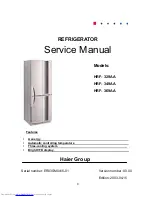
Defrosting
"Stop Frost" system
In normal use ice and frost will form on
the evaporator plates. If allowed to ac-
cumulate, this will impair the efficiency
of the freezer and increase the con-
sumption of electricity.
The stop frost system reduces the build
up of ice and frost by approx. 70 % in
comparison to other appliances. This
means that it is not necessary to de-
frost the appliance nearly as often.
Only use the scraper supplied with
the appliance to scrape off ice and
frost.
Otherwise the evaporator plates
could be damaged making the
freezer unusable.
The freezer should be defrosted from
time to time. It must be defrosted if a
layer of ice approx. 5 mm thick has ac-
cumulated. It is best to defrost when
only very little food or no food at all is
left in the freezer.
Before defrosting
Switch on the super freeze function
at least 4 hours before defrosting to
ensure frozen food retains its cold
reserve for longer when taken out of
the freezer.
Remove the frozen food from the
freezer and place it in another
freezer or cool box or wrap it in sev-
eral layers of newspaper or cloths
and store in a cool place until the
freezer is ready for use again.
To defrost
Carry out the defrosting procedure
as quickly as possible if food has
not been placed in another freezer.
The longer the food is left out at
room temperature, the faster it de-
frosts.
Disconnect and remove the mains
plug from the socket.
Place the divider or a flat container
under the defrosting outlet. Any de-
frosted water will then collect in the
divider / container.
Pull the stopper out of the floor of the
appliance.
Leave the lid of the freezer open.
To speed up defrosting, a bowl with hot
water (not boiling) can be placed in the
appliance.
Defrosting
19














































